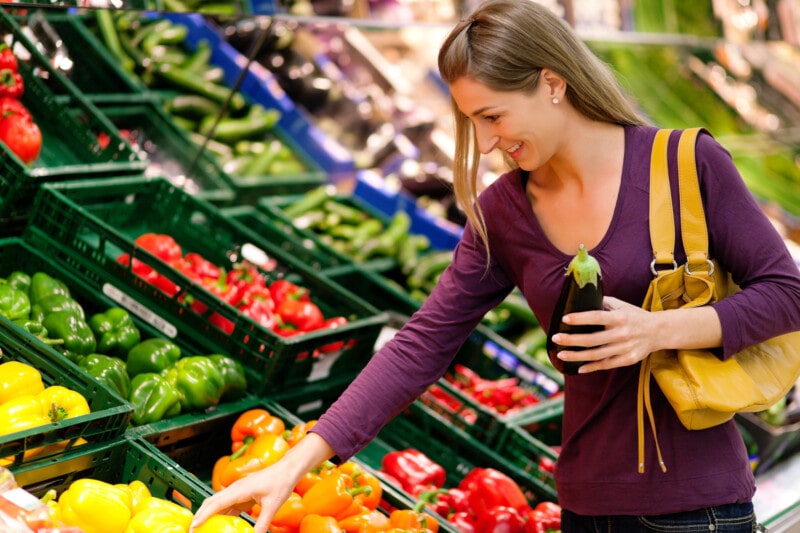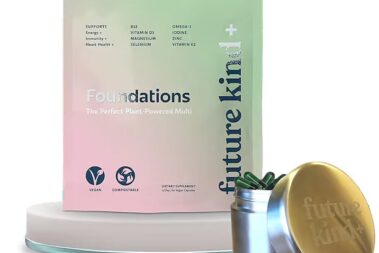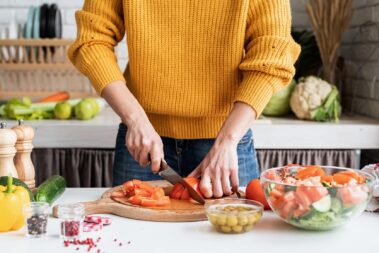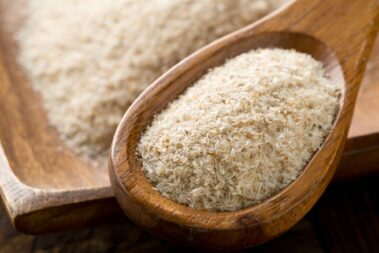Whenever a new diet trend pops up, you can be sure to see high-priced products marketed to that group follow soon after. If you’re considering switching to plant-based but living on a budget, this fact may be enough to turn you off to the idea.
But it’s worth noting that plant-based diets are not a fad. In fact, most of the world has been eating by the principles of plant-based for the better part of human history. This means that all these expensive new products tailored to this type of diet are not necessary in order to eat plant-based.
If you’re wondering how to eat a plant-based diet on a budget, we’ve got all the info you need right here. Below you’ll find seven awesome tips to help you save money as well as some answers to frequently asked questions about eating plant-based on a budget.
Table of Contents
What Is a Plant-Based Diet?
Before we begin, it is a good idea to define what a plant-based diet is so you know what types of ingredients to look for.
Unlike veganism, which is strictly non-animal, plant-based can simply mean eating predominantly ingredients derived from plants. Some plant-based eaters rarely indulge in meat or dairy, while others more readily include the occasional fish fillet or chicken breast in their meal plan.
Plant-based diets, especially those centered on whole foods, are primarily focused on eating for heart and whole-body health. Many who follow this diet also do it because it has a lower impact on the planet and is more sustainable.
If you’re eating plant-based on a budget, the flexibility of this diet is important to acknowledge. Animal products tend to be more expensive and so are naturally avoided. But there may be times when using an animal-based ingredient is cheaper than a plant-based one, in which case you’ll have to make a personal decision on which direction to take.
How Do You Eat a Plant-Based Diet on a Budget?
Many plant-based foods are easy on the wallet, which makes eating plant-based on a budget very attainable. But only if you are mindful during your shopping ventures and know what to look for.
Here are seven tips for keeping your plant-based grocery budget in check.
Stock Up on Cheap Base Foods
The cheapest plant-based foods out there are base ingredients. That is, ingredients that are unseasoned, uncooked, and contain one or very few ingredients.
Cheap base ingredients include foods like:
- Dry beans
- Pasta
- Rolled oats
- Quinoa
- Buckwheat
- Millet
- Rice
- Flour
- Raw nuts
- Polenta
Not only are these ingredients inexpensive, but they last a long time in the pantry so there is little risk of them expiring.
With a little creativity and a handful of added ingredients, you can make a cheap meal out of any of these options.
Be Mindful of Where You Shop
Even these cheap base ingredients can differ greatly in price based on where you shop, so it’s worth considering where to go before you head out to get groceries.
Now, this doesn’t mean you have to shop only at budget or bulk grocers. Depending on the ingredient you’re after, these stores may not actually be the cheapest option.
For instance, organic produce is often priced lower at natural grocery stores than at big chains because they buy more of them and get better discounts. If you are determined to buy organic, then Whole Foods could actually be cheaper than Kroger for these specific foods.
For base ingredients, your best bet will be a bulk store like Costco. But for perishables, you may find the chain stores to be more affordable. For fresh produce, consider checking the prices at your local farmers’ market or farmstand.
Avoid “Vegan Alternatives”
Whenever a traditionally meat or dairy-containing food gets a new vegan makeover, the result is almost always more expensive than the original. This is true despite the fact that plant-based alternatives are often cheaper to make.
For that reason, it is a good idea to avoid “vegan alternatives.”
Instead of buying vegan alfredo sauce, try making your own. Instead of plant-based butter, use olive oil. Instead of meat-alternative burger patties, try creating your own homemade veggie pattie or grilling up a delicious portobello mushroom.
Make Your Own Sauces and Toppings
Because vegan alternatives are often priced higher than they should be, it is usually way cheaper to make your own sauces and toppings.
Most vegan versions of dairy-based sauces can be recreated with a handful of cashews, water, garlic powder, and some nutritional yeast. You can buy all of these ingredients in bulk and make a dozen jars of cream sauce for a fraction of the price.
Even vegan parmesan cheese can be replicated at home for way less than the products at the store.
Shop in Bulk
We’ve already talked about the benefits of buying base ingredients in bulk. But you can take that savings potential to the next level by buying just about everything in bulk.
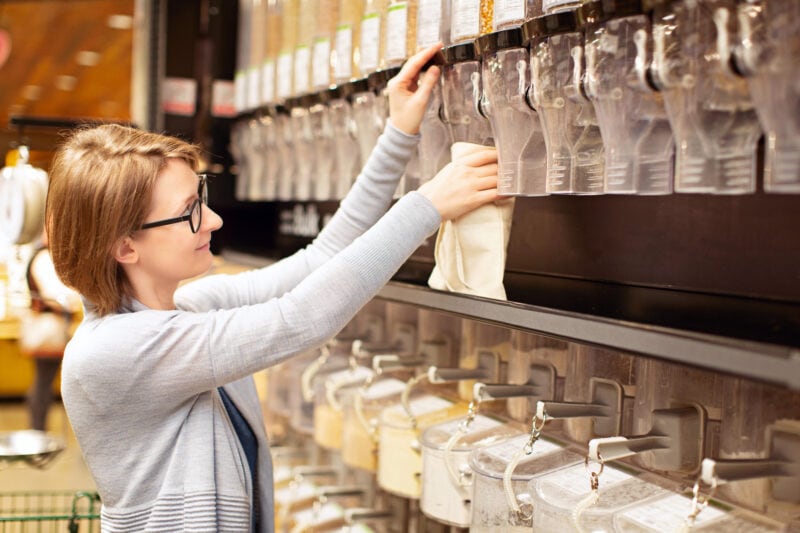
Fruits, vegetables, and leafy greens can be bought in bulk and frozen for later use. Other non-perishables like oil and nut butter can be bought by the gallon and last for months. You can even make your own sauces and condiments and can or freeze them for cheap and easy future meals.
If you don’t have time to prepare these bulk options, you can always buy bulk frozen fruit and other produce. This will be a touch more expensive but can save you a lot of time.
Grow Your Own Spices and Veggies
Did you know you can grow herbs on your windowsill and use them in your cooking? This is a much more affordable alternative to buying expensive dried spices at the store.
If you have a little more space—a patio or a garden—you can grow a lot more than basil. Plenty of vegetables grow well in pots or in the ground. And many will produce more than you need, giving you the option to freeze or can your extras to enjoy all year long.
Shop for What’s in Season
If you can’t grow your own food, you can still take advantage of what’s growing by shopping for only what’s in season.
In-season veggies and fruits are more likely to come from nearby than those out of season (which are often imported from warmer or colder climates). Less travel means a lower price.
This USDA in-season guide is a great resource for figuring out when to eat what.
Plant-Based Eating Considerations and FAQs
Before you dive headfirst into a cheap plant-based diet, there are a few things worth considering to make sure you’re getting all the nutrients and calories you need while spending the least money.
These answers to some plant-based frequently asked questions will help guide you toward a healthy, affordable plant-centric diet.
What are some dangers to eating a plant-based diet?
There is a lot of misconception out there about the health risks of eating a strict plant-based diet. The truth is, plants contain all the macronutrients you need to feel great. Yes, even protein!
In fact, despite myths to the contrary, all plants contain all nine essential amino acids in varying amounts, according to Registered Dietician, Lauren Panoff, MPH, RD. This just means it’s important to eat a variety.
While plant foods are lower in calories, they’re also more micronutrient-dense than meat, dairy, and other foods that dominate a western diet. You can set yourself up well to get the array of vitamins and minerals you need by eating mostly whole plant foods and limiting or excluding animal products.
But there are a few key ingredients that require special attention when eating a plant-based diet.
According to Panoff, a well-planned plant-based diet can provide the majority of the micronutrients you need, and including some fortified foods (like plant milk and nutritional yeast) can be helpful. Get healthy fats from nuts, seeds, olives, and avocados; iron and calcium from leafy greens, soy, cruciferous veggies, and legumes; and selenium from brown rice, mushrooms, oats, or a daily Brazil nut.
As for supplements, vitamin B12 is non-negotiable for a strictly plant-based diet. Others to consider are iodine, vitamin D, DHA, and iron, depending on what dietary sources you get.
How do you stay full eating a plant-based diet?
When some people hear the term plant-based diet, they picture salads and nothing else. The truth is, plant-based and vegan meals can look a lot like your traditional fare.
Giant bowls of pasta, hearty beans and rice dishes, and nut-based cream sauces all provide plenty of fat and protein to keep you feeling satiated. And all can be made for a fraction of the cost of similar meat-containing meals.
If you find yourself feeling hungry on a plant-based diet, consider upping your protein intake by adding more whole grains and legumes. Adding more veggies, which are high in fiber, can also help you feel full longer.
What are the negatives of a plant-based diet?
As long as you are somewhat mindful of what you are eating and are good about varying your ingredient intake, there really are no negatives to a plant-based diet.
Meals overflowing with veggies, fruits, whole grains, and legumes deliver more nutrients than traditional fare. They are also typically less calorie-heavy, especially if you are mindful about your oil use.
Fewer calories and more nutrients mean a healthier, happier you.
But the benefits of a plant-based diet don’t stop there. Plant-based is also better for the environment and the planet.
Produce and grains take fewer resources and less land to produce than meat and dairy. They also have a much lower carbon footprint.
So, if you care about your health and the health of the planet, then a plant-based diet is a no-brainer. It can be done easily, whether you are living on a strict budget or not.
- How to Pick the Perfect Watermelon For a Sweet Summer Treat - April 10, 2024
- Future Kind’s Foundations: A Multivitamin Made for Vegans - December 5, 2023
- Does Nutritional Yeast Go Bad? - November 28, 2023

